Remembrance Day 2018: How WW1 warship HMS Caroline survived the greatest battle of all
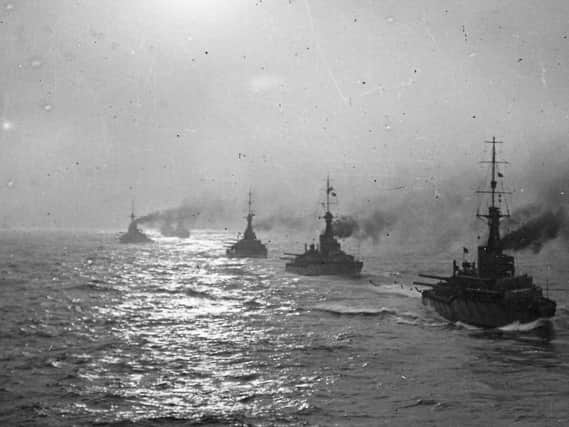

Sitting proudly in Belfast's Alexandra Dock, HMS Caroline has been restored to its former glory and is now open to the public as an important and eye-catching visitor attraction.
Weighing 3,750 tons and measuring 446ft (136m), the light cruiser sailed ahead of the Royal Navy's Grand Fleet during the 1916 Battle of Jutland to establish the position of the German battleships.
Advertisement
Hide AdAdvertisement
Hide AdWhen the two mighty forces came together on May 31 around 80 miles off the Danish coastline, the brutal encounter claimed more than 20 of the 250 ships involved and around 10,000 lives.
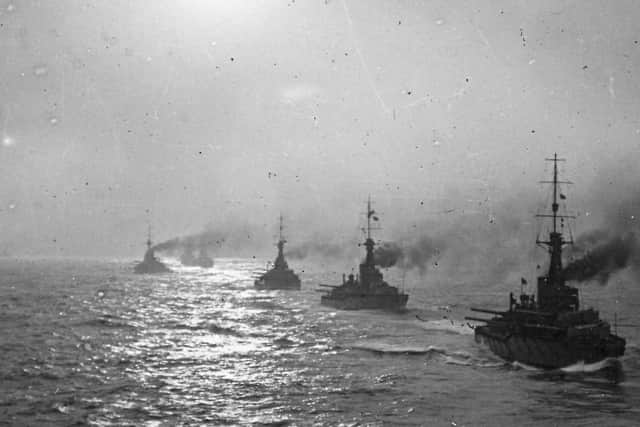

Jutland was the only sea battle of WW1 of any real significance and the last battle in history fought exclusively by warships.
Despite being regarded as having changed the course of the war, the epic 36-hour engagement was completely overshadowed by the unprecedented, wholesale slaughter of the Somme Offensive which began just four weeks later.
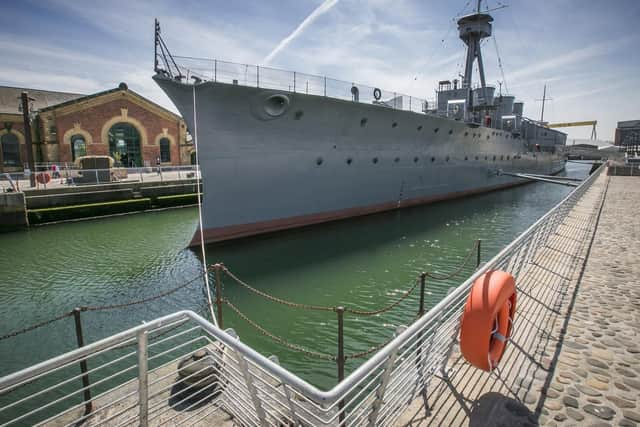

Both the British and German fleets were decommisssioned and broken up following the end of hostilities in 1918, however, HMS Caroline was berthed in Belfast and became a training vessel for the Royal Navy Reserve in Northern Ireland. It also performed a vital service during the Second World War when it served as an operations headquarters for the efforts to protect the Atlantic convoys from German U-boats.
Advertisement
Hide AdAdvertisement
Hide AdCaroline remained a commissioned ship of the Royal Navy right up until the National Museum of the Royal Navy (NMRN) acquired the vessel seven years ago. It was initially planned for the NMRN to relocate Caroline to Portsmouth but a public outcry led to millions in funding - including a £12.5 million Heritage Lottery Fund grant - being secured to keep the Belfast landmark in its home berth.
In keeping with the Royal Navy's adherence to time-honoured traditions, when the historic warship was finally decommissioned in April 2011 there was plenty of pomp and ceremony to mark the send off.
Under the watchful eye of Rear Admiral Martin Alabaster and a number of VIP guests, a Royal Navy colour party presented arms as the white ensign was lowered for the last time, ending almost 100 years of exceptional service.
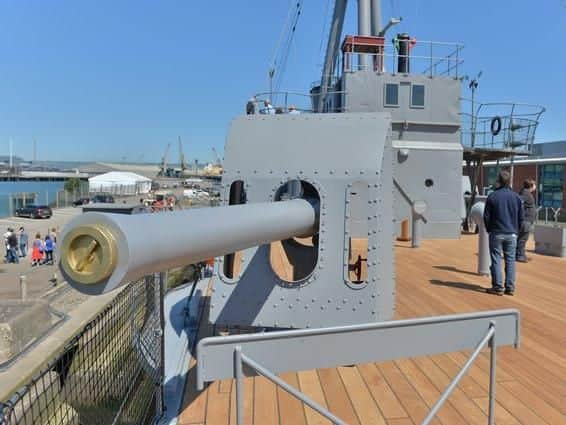

Speaking on deck after the flag of the NMRN was attached to the ship's mast, Rear Admiral Alabaster acknowledged Caroline's place in history.
Advertisement
Hide AdAdvertisement
Hide Ad"HMS Caroline is an extraordinary ship with a very splendid history behind her - almost 100 years of service - and with her decommissioning today we are saying goodbye to her after an outstanding period. She has been the second longest ship in commission, second only to HMSVictory," he said.
A traditional 'laying up of colours' took place at Belfast's St Anne's Cathedral following the on board ceremony, with the ship's standard officially handed over and now hanging in the main body of the church for safe-keeping.
HMS Caroline is now firmly established as popular attraction on the city's maritime tourist trail, which also includes the Titanic Belfast centre (opened in 2012 in  on the site where the world famous ship was built) and the last surviving White Star Line vessel - the fully restored Titanic tender ship SS Nomadic.
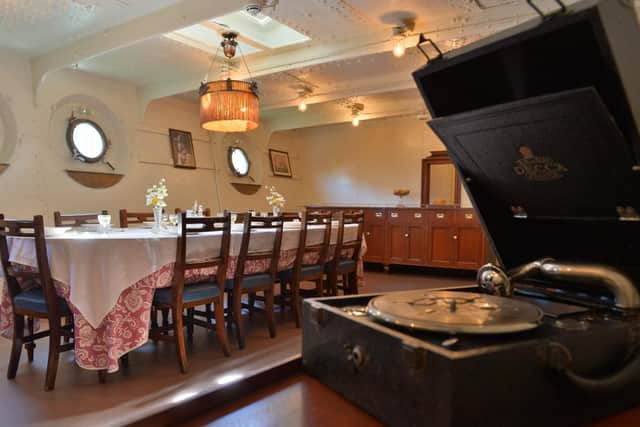

Built in Birkenhead in 1914, HMS Caroline was one of the fastest warships of the era, capable of up to 30 knots.
Advertisement
Hide AdAdvertisement
Hide AdOn board, visitors can take a tour that includes the Captain's quarters, Marines' mess, sick bay, galley and engine room - as well as view dynamic films of how devastating a sea battle can be, visit the torpedo school and explore a number of interactive exhibits.
Replicas of the ship's orginal 6-inch and 4-inch guns have also been added on deck to complete the painstaking restoration.
As well as being one of the most historically significant ships still afloat, Caroline is now of particular importance as a museum housing almost 500 original artefacts. Displays cover different periods in the vessel's history and document the role played by Northern Ireland and its citizens in both world wars.